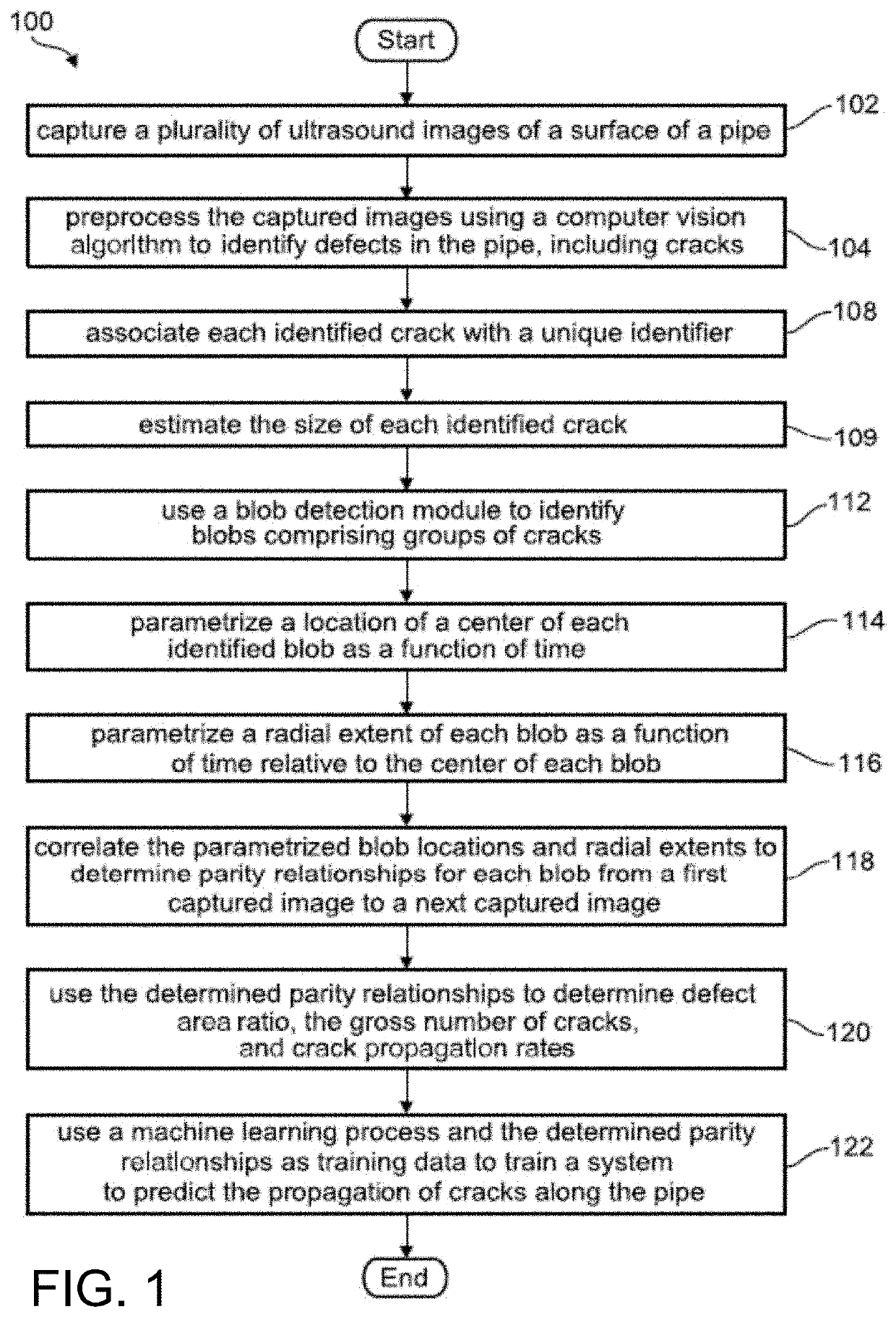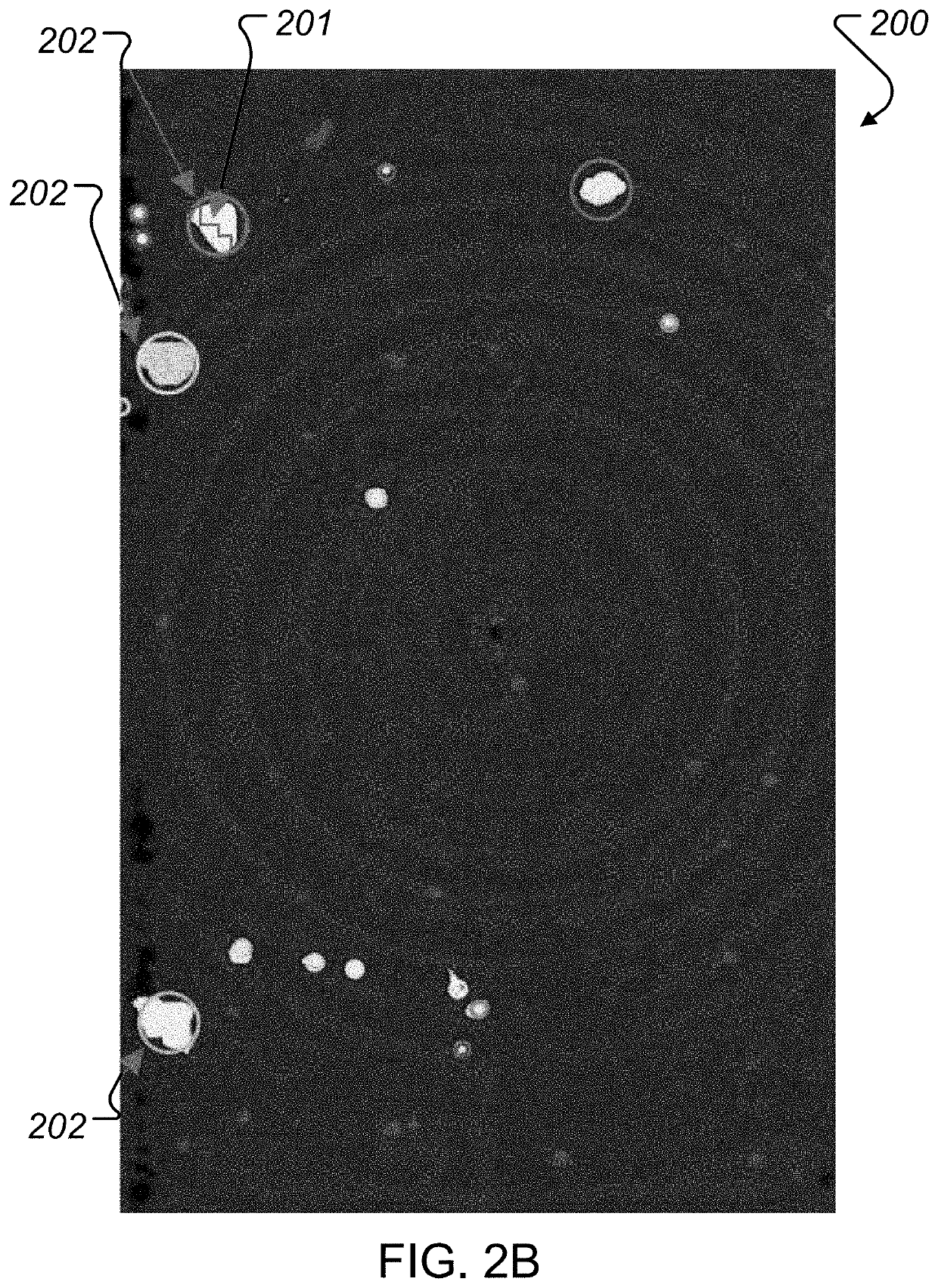Method for automated crack detection and analysis using ultrasound images
a crack detection and analysis technology, applied in the field of ultrasound images, can solve the problems of cracks in pipes, high risk of catastrophic failure of such pipes, and enormous engineering stresses on the equipment involved
- Summary
- Abstract
- Description
- Claims
- Application Information
AI Technical Summary
Benefits of technology
Problems solved by technology
Method used
Image
Examples
Embodiment Construction
[0024]The present disclosure concerns a method and system that can be used to analyze crack formations and predict the propagation of cracks on the surface of a pipe that have been identified by ultrasonography.
[0025]The method 100 of the present disclosure, which is shown schematically in FIG. 1, begins in step 102 by capturing a plurality of ultrasound images of at least one area of interest on a surface of the pipe. FIGS. 2A and 2B show two examples of ultrasound images 200 obtained by scanning selected areas of a surface of a pipe. Each of the two images reveal the presence of multiple blobs 202, which include areas where cracks or other defects 201 present within the surface of the pipe have created areas of detectable stress concentration. As each image is captured, it is indexed to the time and the position along the surface of the pipe at which the image was captured. Any suitable or convenient coordinate system can be used to record the exact position data corresponding to ...
PUM
 Login to View More
Login to View More Abstract
Description
Claims
Application Information
 Login to View More
Login to View More - R&D
- Intellectual Property
- Life Sciences
- Materials
- Tech Scout
- Unparalleled Data Quality
- Higher Quality Content
- 60% Fewer Hallucinations
Browse by: Latest US Patents, China's latest patents, Technical Efficacy Thesaurus, Application Domain, Technology Topic, Popular Technical Reports.
© 2025 PatSnap. All rights reserved.Legal|Privacy policy|Modern Slavery Act Transparency Statement|Sitemap|About US| Contact US: help@patsnap.com



